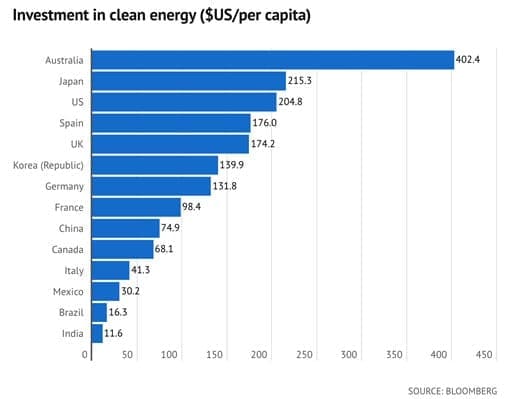 Eucalypt forests are particularly inflammable and this year’s Australian bush fires have, so far, ravaged close to 20 million hectares, about 2.5 per cent of the continent, claiming 29 lives. The proximity of the fires to Sydney, Melbourne and Canberra left them blanketed with smoke for days on end.
Eucalypt forests are particularly inflammable and this year’s Australian bush fires have, so far, ravaged close to 20 million hectares, about 2.5 per cent of the continent, claiming 29 lives. The proximity of the fires to Sydney, Melbourne and Canberra left them blanketed with smoke for days on end.
Recent days have seen heavy rainfall and flooding, which has at least temporarily extinguished many of the fires and facilitated control of others.
The seriousness of the fires notwithstanding, neither the loss of life nor the extent of burning is a record.
Particularly noteworthy is that this summer’s fires have been recorded earlier than usual. Dry, windy and hot weather was triggered by a climatic phenomenon described as a near-record Positive Indian Ocean Dipole – warm seas in the ocean’s west and cooler seas in its east. This compounded the effect of an accumulation of combustible material, especially on forest floors after a three-year drought.
The buildup of combustible material is a result of the authorities’ failure to undertake cool season burn-offs on public lands and to ensure such activity also takes place on private land. Land burning outside of the summer months was practised by the aboriginals for thousands of years prior to European settlement.
Every fire season with high losses brings inquiries that urge more aggressive burn-offs. These recommendations tend to be neglected as memories fade. The amount of burning that has taken place in recent years has been less than a third of what successive inquiries have recommended following earlier serious fires.
This Australian summer has been relatively hot. Some attribute this to climate change, though even if this were true, higher temperatures play a very minor role in the severity of bushfires. Nor is the drought credibly associated with human-induced global warming, which climate models suggest has little effect on rainfall, the trend levels of which have, in any case, been flat for the past century.
Subsidy seekers in the renewable sector and among its media supporters hint, sometimes even claim, that the fires are caused by Australian delinquency in forcing the replacement of coal by wind and solar.
While it’s clear that Australia, with not much more than one per cent of world greenhouse gas emissions, could never affect world climate, there are delusional ideologues who consider that the nation punches above its weight and that its policies will shepherd others into following suit.
Australia has harmed itself far more than any other nation in substituting renewables for its abundant supplies of low-cost, reliable coal. In terms of per capita spending, as illustrated in the accompanying chart, Australia spends almost twice as much as any other country on ‘clean energy’ and five times as much as Canada.

Many businesses, especially those that get a competitive or market benefit from higher energy prices, see an Australian carbon price as a crucial part of any global solution. Such a tax, previously and euphemistically labelled a National Energy Guarantee, is beneficial for those firms that gain a competitive advantage from it. But for the economy as a whole, it’s a disaster.
Wind and solar provide over 16 per cent of Australian electricity supply. Without the current array of subsidies and regulatory restraints, none of this would be possible and Australia would likely have an electricity supply system based 90 per cent on coal, with the rest provided by gas and hydro to allow for peaks and fast-start capacity.
This pattern would re-emerge from ceasing all subsidies immediately and removing restraints on coal and gas production that regulatory policies have established. The outcome would be electricity prices at among the lowest in the world and gas prices similar to Canada’s.
The Australian government claims existing policies are on course to meet the commitments of a 26 to 28 per cent reduction in emissions by 2030.
Australia, unlike Canada, easily met its targets from the previous climate treaty, the 1997 Kyoto Protocol. Though Australia signed onto less demanding targets than Canada, these were achieved because land clearance was banned with a cost to landowners of $200 billion, for which no compensation was paid.
The Canadian government was urged to follow a similar course but, rightly, decided this was unconscionable and excessively expensive, if not constitutionally improper. So Canada reneged on its Kyoto commitment.
Canada’s integration with the U.S. economy means it has little option but to follow policies similar to the Americans. The direction of President Donald Trump’s climate and energy policies is clear and will dictate those of Canada, irrespective of Ottawa’s preferences.
Australia has fewer such external disciplines and is therefore hostage to special-interest groups and activists.
As for forest fires, the cure is simple: clear the forest floor of debris by burning in accord with forest experts’ recommendations – and prosecute for criminal negligence those politicians and officials who have prevented this.
Alan Moran, an Australian economist based in Melbourne, is a research fellow at the Frontier Centre for Public Policy. His latest book is Climate Change: Treaties and Policies in the Trump Era.
Alan is a Troy Media Thought Leader. Why aren’t you?
The views, opinions and positions expressed by columnists and contributors are the author’s alone. They do not inherently or expressly reflect the views, opinions and/or positions of our publication.

